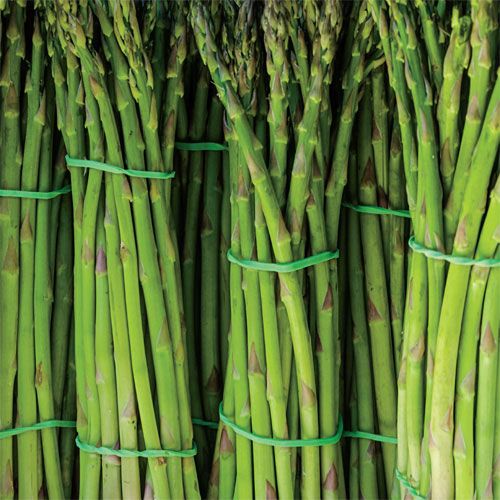For Mother’s Day in 2012 I received ten 1-year old Jersey Knight asparagus plants. I was insanely excited as I love asparagus; but everyone who heard of my gift would say, “You know it takes forever to grow, right?” Sort of. Asparagus takes about two years to really produce an edible, strong crop- so growing asparagus is a lesson in patience. And, to be completely honest, if you do your research, you have a better chance of being a happy asparagus gardener. You do not get the swift satisfaction of planting a pole bean and watching it go from seed to harvest in two months, but you will have the joy of eating a delicious batch of freshly steamed asparagus from your own yard if you choose your variety carefully, plant it in just the right amount of sunlight, and order your starts from a reputable nursery that sells disease-free roots, such as Gurney’s.

Asparagus can be grown from seed, but because it takes so long to get from seed to harvest (two to three years) many people choose to order one year old root crowns to start their asparagus garden. Because your asparagus plants are perennial, they will occupy a spot in your garden for up to 20 years- so choose your spot with care. Full sun will give you the best results, but asparagus can tolerate some shade. Lighter soils that drain fast and warm up quickly in spring; any very wet soils or standing water will rot the roots. Because asparagus plants are monoecious (each individual plant is either male or female), you might want to consider choosing a variety that is either all male plants or mainly male plants. Male asparagus plants yield more harvestable shoots because they do not put their energy into producing seeds. Try Gurney’s Jersey Supreme Hybrid Asparagus or Jersey Knight Hybrid Asparagus; both are all-male, high yield varieties. For something a little different, especially if you are gardening with kids or grandkids, choose Purple Passion Asparagus. The stalks are larger and sweeter-tasting than most varieties and the purple color is intriguing (stalks will turn green when cooked).
No matter which variety you choose, keep in mind that patience is key- but do not just plant, sit back, and wait two years. Asparagus plants need care, so keep the area weed free and feed your plants. One option is Gurney’s Asparagus Food which releases nutrients as plants need them- meaning no artificial growth spurts. The food should be applied in spring and then again after the harvest. Asparagus will thrive in almost any zone that has a winter ground freeze or dry seasons; the exception being Florida and the Gulf Coast. And while yes, growing asparagus is a lesson in patience, if you put in the time and tend to your plants for the first two years, you and your family will be enjoying asparagus for many years to come.

